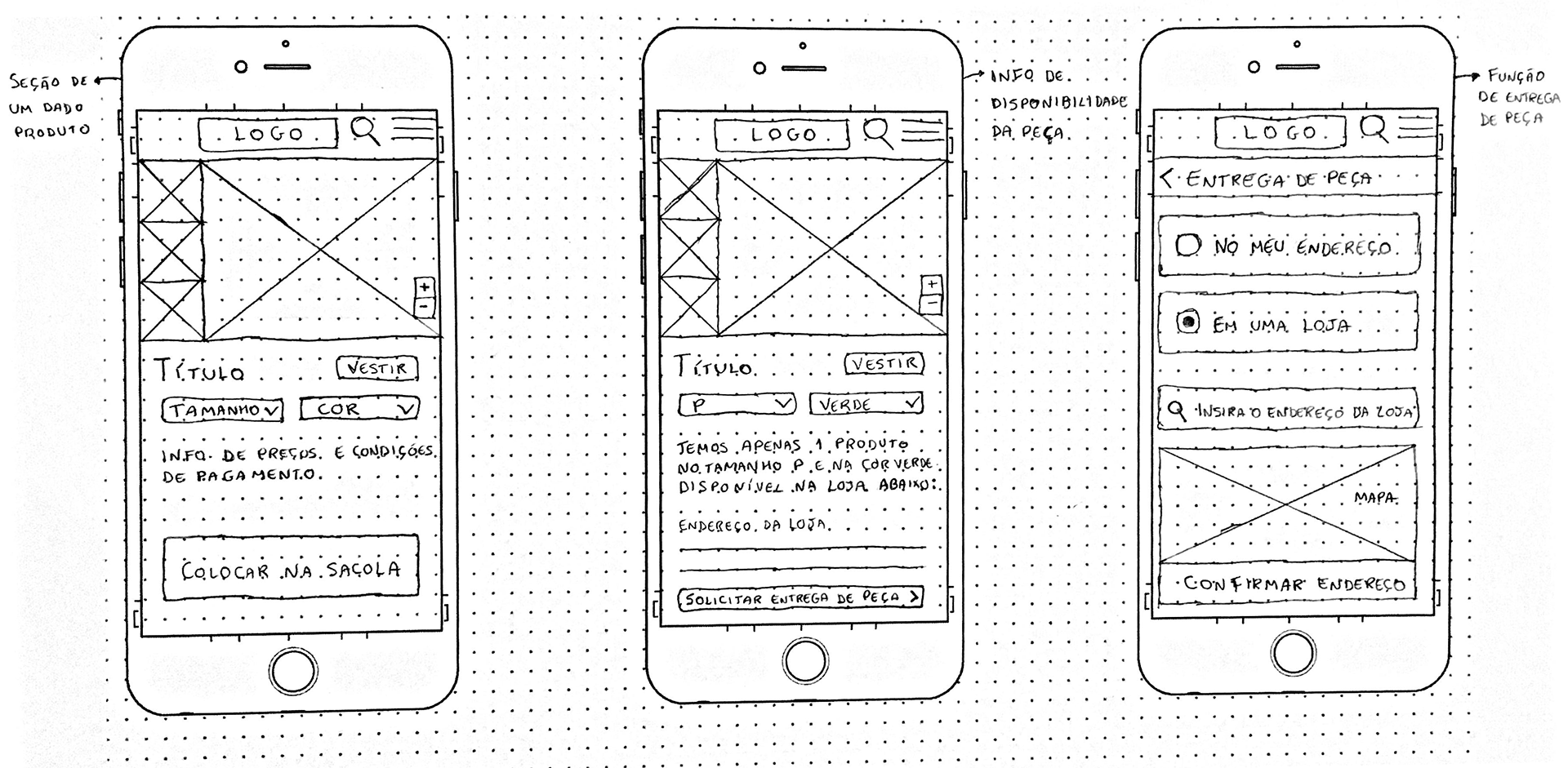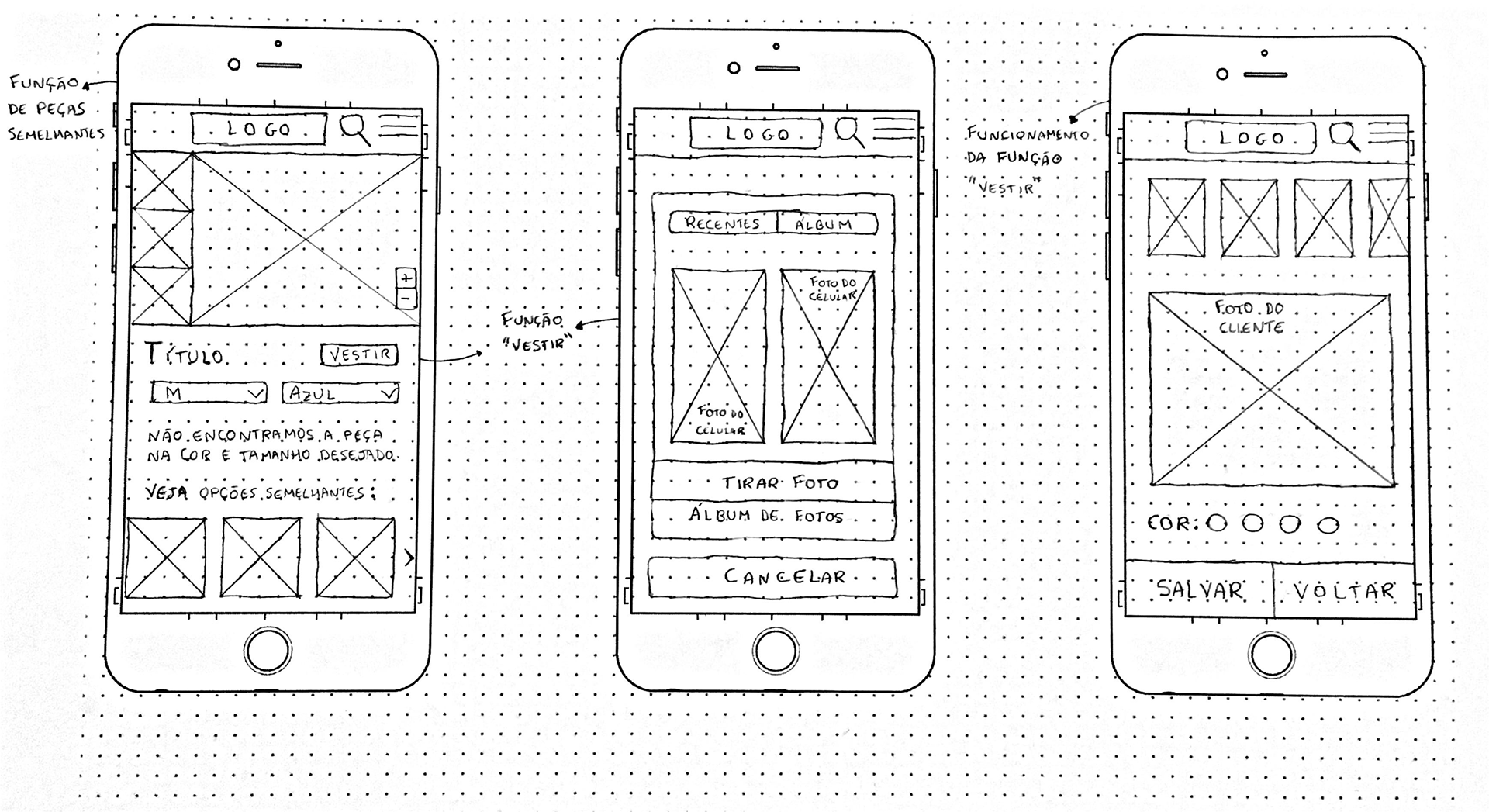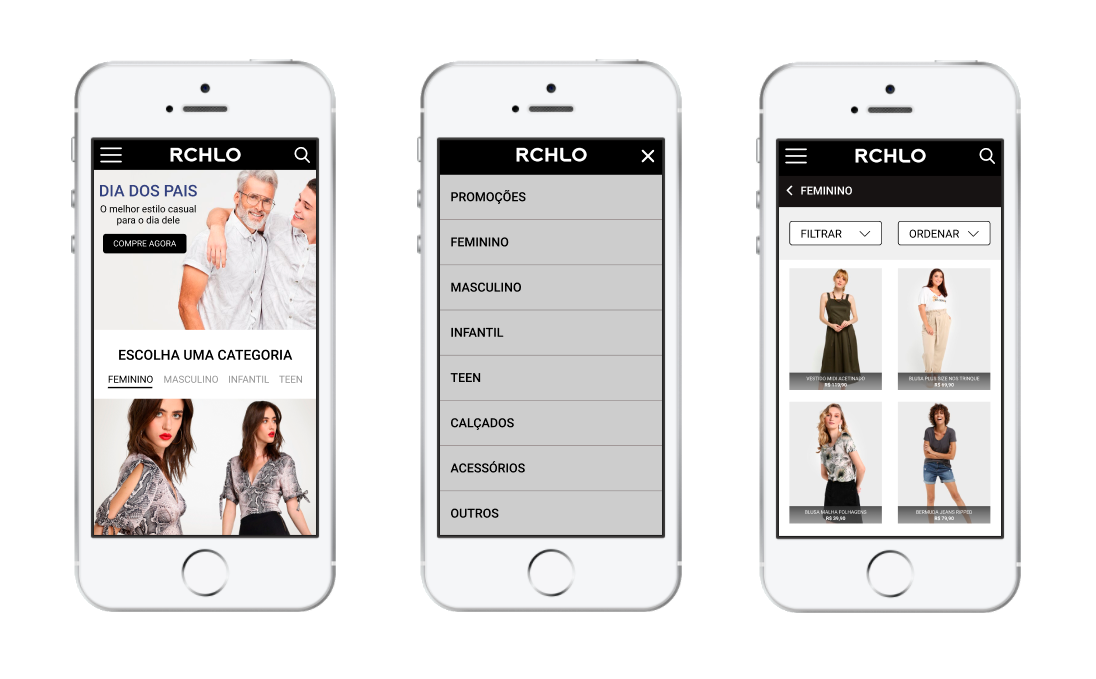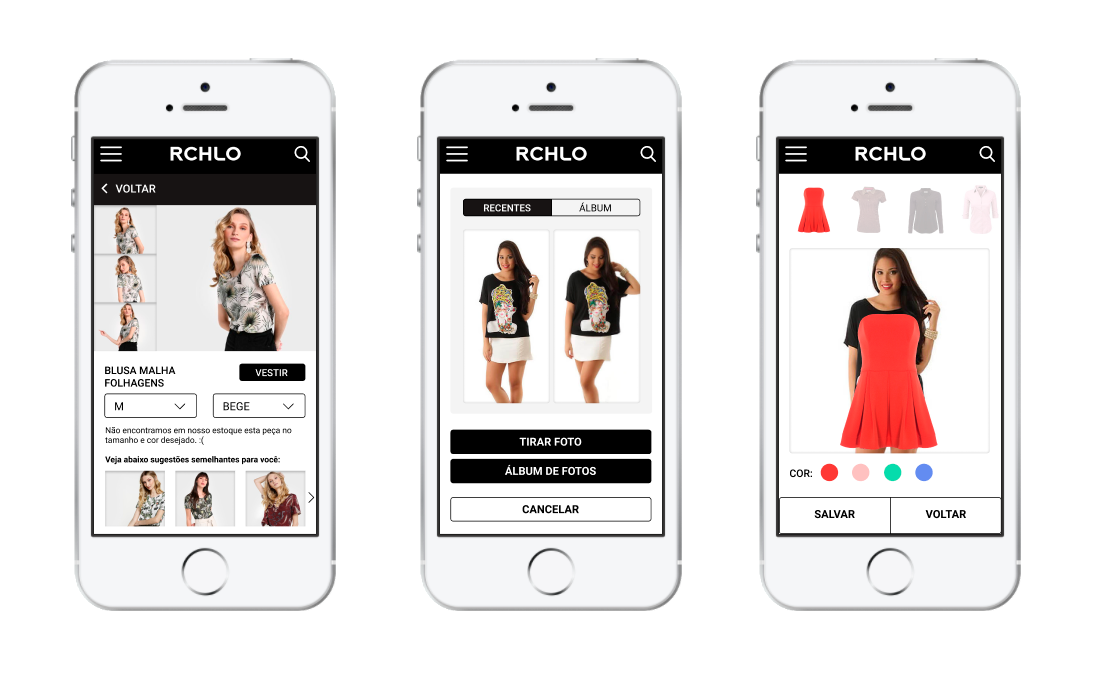In mid-2019, I received a technical challenge to try to join the Riachuelo team, and I found the proposition so interesting that I wanted to turn it into a case study. I believe that this is an interesting way to present the techniques I used throughout this process, as well as all the insights and learnings generated in the 5 days I had to come up with a proposal.
Here, I will provide my key results obtained during the solution-building process. However, to read the full case study, simply click here.
Context
The proposed challenge concerned a common situation that is usually difficult to reverse the customer's experience in the day-to-day store environment:
"A customer visits the physical Riachuelo store and while browsing the sales area, they find a clothing item that they definitely want to purchase. However, when trying on the garment, they cannot find a size that fits them comfortably or a color that suits them well."
My mission, therefore, was to develop a proposal for Riachuelo to not miss out on this sales opportunity and ensure that the customer was properly attended to and satisfied with their purchase. It was necessary to take into consideration that the Guararapes Group owns the entire chain, from production (factory) to selling the clothing product to the customer (information provided in the challenge).
Questionnaire
A simple online questionnaire was created and distributed among my network of contacts to try to understand how people perceived the shopping experience, whether it was online or in-store. I collected 132 responses in less than 24 hours, and some very interesting insights were obtained.
Key insights:
1) Despite the majority being accustomed to shopping through apps, when it comes to clothing, there is still a need to be in a physical store.
2) They don't feel comfortable buying clothes through apps.
3) The quality of the clothing emerged as the primary factor during the purchase, and another frequently mentioned factor is how well the clothing fits on the body. Both justify the customer's need to be in a physical store.
4) Visiting physical stores is the main way people search for items of interest, even with the option to search through websites or apps.
5) Over 81% have encountered difficulties finding clothing in their desired size and color. However, the majority of people do not give up on purchasing from the store if they can't find the item in their desired size and color. They search for alternative options before actually giving up on the purchase.
6) The discomfort of buying clothes through an app does not rule out using it for making a purchase, as long as there is prior physical contact with the specific item.
Interviews
In order to gain a better understanding of people's purchasing behaviors, I conducted informal interviews with a few individuals through WhatsApp. Three people were interviewed, including two men and one woman, from different cities and financial backgrounds.
Key insights:
The price factor is one of the main reasons that motivate them to make this type of purchase, whether it's finding cheaper items or being offered discount coupons. Additionally, being able to choose calmly and without rush is seen as a favorable aspect.
There was unanimous concern about buying online, even though it is a common habit among the interviewees. However, to avoid problems, they prefer to opt for brands whose quality or sizing they are already familiar with.
All of them have also had negative experiences in cases like this. Examples mentioned include products that didn't match the characteristics described on the website, poor quality items, and products that were much larger than advertised.
The three interviewees prefer buying from physical stores. The main reasons mentioned were: being able to try on the item, asking the salesperson for recommendations regarding color, brand, fabric, and size, being able to assess the quality of the item, and the convenience of obtaining the item immediately. In some cities, online purchases take too long to arrive.
When they can't find the desired item in the preferred color and size, they end up giving up on the purchase. One of the interviewees mentioned using the "notify me when available" feature, but if there is no prospect of restocking, they prefer to give up or look for a similar product. Another interviewee mentioned that they would only persist in buying the item if it was very important and had a good price (e.g., a suit), and they would go to another store to try to find it.
Lastly, all three interviewees had their most recent shopping experience in a physical store. They were motivated to make the purchase due to the prices, payment conditions, and the immediate availability of the product. In general, although they have the habit of buying clothes online, they do so only because they trust the brand, but they prefer going to physical stores for more confident decision-making.
(Proto)Persona
Based on the inputs I gathered from the questionnaire and interviews, I created Maria Clara, a 24-year-old journalist who loves the world of fashion:
Storytelling
To develop a storytelling for the proto-persona, I used the Pixar Storytelling tool, developed by the animation studio Pixar. The result was as follows:
Once upon a time, there was Maria Clara, a journalist who was passionate about the world of fashion and photography. Every month, she would take a day off after work to visit the mall and check out the latest offerings from her favorite stores, always trying to keep her wardrobe refreshed. One particular day, she came across a clothing item that she had been searching for for months but couldn't find it in her favorite color, blue, or in her size. This left her feeling a bit frustrated, but since she really wanted that piece, she decided to ask a store employee for information. As a result, she discovered that the store had a functionality that allowed her to search for the item across their entire network, filtering by the color and size she desired. Finally, she found her long-awaited garment in one of the stores within the network. She requested that they send the item to the store she was currently in, allowing her to try it on and leave satisfied with her newest acquisition.
User Journey Map
In order to understand the main pain points, emotions, and behaviors of the user in a consumer experience, a user journey map was created, enabling me to identify potential process failures, discover improvement opportunities, and/or present important solutions for a seamless journey:
Proposed Ideas
After considering possible solutions, I came up with three ideas that I deemed interesting and feasible:
1) Fashion consulting service (low cost);
2) Virtual reality fitting room (high cost);
3) App for browsing and purchasing clothes (medium cost).
Here, I will only focus on the third solution, but if you want to better understand the other proposed ideas, they are explained in detail in the Medium link.
App for browsing and purchasing clothes
This may be the most obvious solution to propose, but I was surprised to discover, through the questionnaire I conducted, that the majority of people do not feel comfortable buying clothes through apps and that the experience of the physical store is still very important to these consumers. However, as I mentioned earlier, even if they don't feel comfortable, the use of an app can be quite interesting for this shopping experience, but in order for users to build trust, there is still a need for a tangible experience.
Therefore, I came up with 5 key features that, while not immediately solving the problem, provide alternatives to prevent them from giving up on the purchase:
1) Integrated search function across all stores and factories to find items in the desired size and color throughout the network.
2) Real-time display of the quantity of items by color and size, also indicating which stores have the requested item.
3) Delivery service of the item to the customer's preferred store or even to their residence for trying it on and potentially making the purchase. Deliveries would be made within 24 hours.
4) Simulation of wearing the clothing item through the app using a photo.
5) In case the item is no longer available in any store within the network, recommend similar pieces or items of the same style to create a new sales opportunity.
Sketchframes



Prototype


